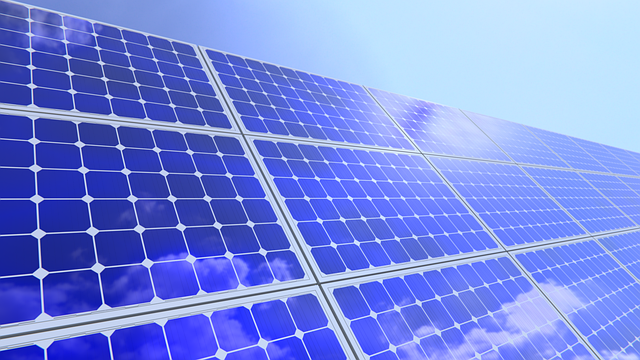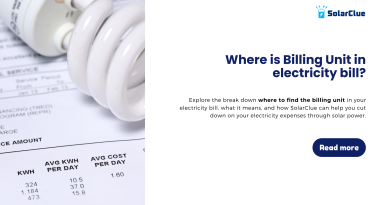Revealing Solar Grid System Prices
A sustainable and clean source of energy is the need of the hour. As the world moves towards renewable energy sources, solar power has emerged as one of the most viable options. Among different solar power systems, the on-grid solar system has gained popularity due to its ability to generate electricity and sell excess power back to the grid. In this blog, we will delve into the details of on-grid solar system price and explore its various components, benefits, and installation process.
Table of Contents
The Components of On-Grid Solar System
To understand the pricing of on-grid solar systems, it is essential to know the components involved. The three key components of a basic on-grid solar system are solar panels, inverters, and mounting structures.
Solar panels are the heart of any solar system. These panels consist of photovoltaic cells that convert sunlight into direct current (DC) electricity. The number of panels required depends on the electricity consumption of the household or commercial establishment.
Inverters play a crucial role in converting the DC electricity generated by solar panels into alternating current (AC) power, which is usable in homes and businesses. On-grid systems typically use grid-tied inverters, which synchronize with the utility grid to ensure a seamless flow of power.
Mounting structures are used to secure solar panels on rooftops or on the ground. The cost of mounting structures depends on the type of installation and the location of the system.
Factors Influencing On-Grid Solar System Prices
Several factors contribute to the overall cost of on-grid solar systems. These factors include:
1. Size of the system: The size of the solar system is directly proportional to its price. Larger systems require more solar panels and inverters, which increase the overall cost.
2. Power requirements: The electricity needs of a household or business determine the size of the system. Higher power requirements necessitate a larger and more expensive solar system.
3. Quality of components: The quality of solar panels, inverters, and mounting structures affects the price. High-quality components ensure better performance and durability, but they come at a premium price.
4. Installation complexity: The complexity of the installation process can impact the price. Rooftop installations require additional structural assessments and labor, which can increase the overall cost.
5. Government incentives: Government policies and subsidies can significantly reduce the upfront cost of installing a solar system. These incentives vary from region to region and can lead to substantial cost savings.
An Overview of On-Grid Solar System Pricing
Key Components of On-Grid Solar System Pricing:
Solar Panels:The cost of solar panels constitutes a significant portion of the overall on-grid solar system pricing. Advances in technology and increased production have led to a gradual decrease in solar panel prices over the years. The type, efficiency, and brand of solar panels chosen can impact the overall cost.
Inverters:
Inverters are essential components that convert the direct current (DC) generated by solar panels into alternating current (AC) suitable for use in homes or businesses. The type and capacity of inverters influence the pricing, with more advanced inverters often coming at a higher cost.
Mounting Structures:
Proper installation of solar panels requires sturdy and durable mounting structures. The pricing of these structures depends on factors such as the type of roof (flat or pitched), the material used, and the overall design complexity.
Electrical Components:
Wiring, switches, and other electrical components are necessary to connect the solar panels, inverters, and the grid. The quality and quantity of these components contribute to the overall system cost.
Installation Costs:
Professional installation is a crucial aspect of on-grid solar systems. Labor costs, permits, and any additional construction required can impact the overall pricing. Local regulations and the complexity of the installation site can also influence installation costs.
Monitoring and Control Systems:
Some on-grid solar systems include monitoring and control systems that enable users to track energy production and consumption. These systems often come with an additional cost but provide valuable insights into system performance.
Government Incentives and Subsidies:
Government incentives and subsidies can significantly reduce the upfront cost of on-grid solar systems. Understanding the available incentives in a specific region is essential for assessing the true cost of adopting solar energy.
Maintenance and Warranty:
While on-grid solar systems generally require minimal maintenance, the inclusion of warranties and ongoing support can affect the overall pricing. High-quality components often come with longer warranties, providing users with peace of mind.
As technology advances and the demand for renewable energy increases, the pricing of on-grid solar systems is becoming more competitive. Understanding the key components and factors influencing pricing is crucial for making informed decisions about adopting this sustainable energy solution. With the potential for long-term cost savings, reduced environmental impact, and the possibility of generating income through excess energy sales, on-grid solar systems continue to be a viable and attractive option for individuals and businesses alike.
The Benefits of On-Grid Solar Systems
On-grid solar systems offer numerous advantages to residential and commercial consumers. These benefits include:
1. Reduced electricity bills: By generating their own electricity, consumers can significantly reduce their monthly utility bills. Excess power generated by the solar system can be sold back to the grid, further offsetting electricity costs.
2. Return on investment: On-grid solar systems provide a solid return on investment. With decreasing prices and increasing electricity rates, these systems can pay for themselves within 5-7 years, depending on the installation and usage.
3. Environmental sustainability: Solar power is a clean and renewable source of energy, leading to reduced greenhouse gas emissions and a smaller carbon footprint. On-grid solar systems contribute to a cleaner and greener future.
4. Grid reliability: On-grid solar systems are connected to the utility grid, ensuring a consistent and reliable power supply. During times of low sunlight or increased electricity consumption, consumers can draw power from the grid seamlessly.
5. Government incentives: Many governments offer attractive incentives for solar installations, such as tax credits, feed-in tariffs, or net metering. These incentives can further enhance the financial viability of a on-grid solar system.
Conclusion
Unlock the potential of effective and sustainable electricity generation with SolarClue®’s on-grid solar systems. Understanding the pricing involves careful consideration of size, power requirements, component quality, installation complexity, and government incentives. Reaping benefits like reduced electricity bills, return on investment, environmental sustainability, grid reliability, and government incentives, on-grid solar systems are gaining popularity. Choose solar power with SolarClue® to contribute to a greener future and enjoy the enduring financial and environmental advantages it brings.
Frequently Asked Questions
Yes, some systems have built-in energy management tools and remote monitoring capabilities for enhanced user control.
Advanced systems can provide grid support services, enhancing stability by regulating voltage and frequency.
Yes, some systems use predictive analytics to adjust energy production based on anticipated changes in demand, optimizing grid interaction.
Innovative designs include solar-integrated artworks and transparent solar panels that blend functionality with aesthetics.
Some systems use real-time weather data to adjust energy production, ensuring a consistent power supply during unexpected weather events.
Emerging technologies include solar skin and solar paint, potentially transforming how solar grids are integrated into various surfaces.
Yes, community solar projects enable multiple users to share the benefits of a single, larger solar grid installation.
Integration with smart home platforms allows users to control and monitor their solar grid systems conveniently through connected devices.
Some projects are exploring solar roadways and solar windows, showcasing the potential for solar grids to extend beyond traditional installations.
Yes, with energy storage solutions, solar grid systems can provide backup power during emergencies, enhancing disaster resilience.


